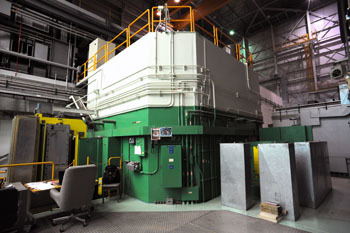
The US Department of Energy’s Idaho National Laboratory (INL) achieved an important step towards restoring nuclear energy transient testing capability with the resumption of operations at the Transient Reactor Test (TREAT) Facility.
The TREAT facility has been shut down and maintained in standby status since 1994.
TREAT is designed specifically to test nuclear reactor fuels and materials under extreme conditions.
It can produce sudden bursts of energy that are more than five times more powerful than a commercial power plant—allowing scientists to examine fuel performance.
This capability is an important asset to nuclear scientists and engineers as they work to increase the safety and performance of current and future nuclear reactors.
“The Department of Energy’s decision to restore transient testing capability at INL is part of our efforts to revitalize the nation’s nuclear energy capacity,” said Ed McGinnis, principal deputy assistant secretary for Nuclear Energy.
“By investing in innovative fuel cycle infrastructure, we can advance nuclear as a key source of clean, resilient power and maintain U.S. leadership in developing advanced nuclear technologies.”
INL restored the TREAT reactor to operational status after the successful completion of extensive inspection and refurbishment activities over the last few years, thorough evaluation and assessment of reactor systems, and the low-power run conducted today.
“The successful resumption of TREAT operations was the result of the effort of many people within INL and DOE,” said INL laboratory director Mark Peters.
“This teamwork resulted in resumption of operations being accomplished 12 months ahead of schedule and for nearly $20 million less than originally estimated.”
Over the next several months, INL will prepare for reactor transient operations and performance of the first new transient experiments in 2018.
Recommended for you
